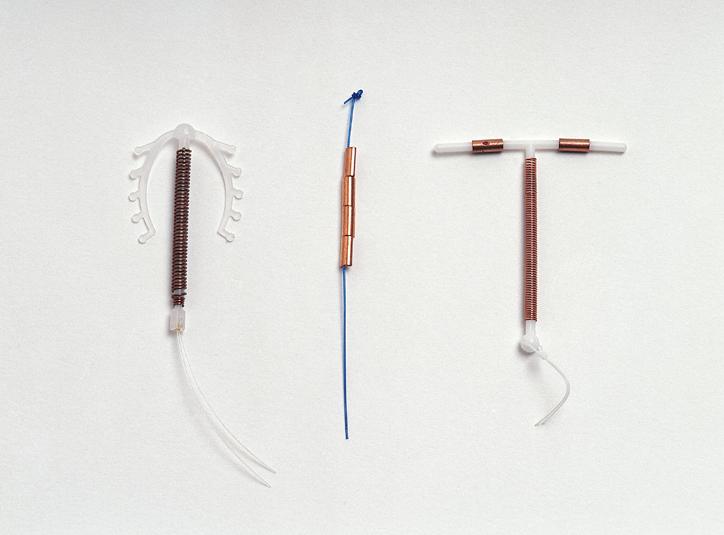Forms of birth control have been around for decades, and after the fog of shame and congressional gatekeeping lifted in the 1960s, birth control became more available and prevalent. One of the most popular and effective forms of birth control has been the IUD. The IUD or Intrauterine Device was initially conceived in 1909 when Dr. Richard Richter used insertions of a silkwood ring into the uterus.
In the 1920s, Dr. Ernest Grafenberg and Dr. Karl Prust also created silkwood rings for uterine insertion with varying degrees of modification to Richter’s original design. These IUD’s were reported to have an effective rate of 97% against pregnancies. Dr. Grafenberg, in a later revision, used pure silver around the ring and unfortunately, the women’s bodies absorbed the silver with their gums turning blue and black (gingival argyrosis). He used a silver alloy made from a mix of different metals, including copper, which alleviated the silver absorption problem and also increased the effective rate to 98.4% against pregnancy.

Copper would play a part later on in the century with doctors discovering the effect that copper has on sperm, which increased effectiveness against pregnancy to 99%. These copper-wired IUD’s would later come into the market in 1988 under the Paragard name.
There have been some misfires on the road to the IUD’s of today. The A.H. Robins Company in 1971 put an IUD on the market called the Dalkon Shield. The marketing for this IUD was aggressive and was priced modestly compared to other IUD’s on the market. In 1974, it was pulled from the market due to a poorly-designed removal string that caused bacteria to enter the uterus. These bacteria caused thousands of women to develop Pelvic Inflammatory Disease (PID), infertility, and in some cases, sepsis. There were over 300,000 lawsuits filed against A.H. Robins in the late 1970s which caused the company to go bankrupt and fold.
There are five different kinds of IUD brands today, which consist of Skyla, Kyleena, Lilleta, Mirena, and Paragard. The first four are known as hormonal IUD’s because they contain the hormone Progestin (Levonorgestrel) which mimics the naturally-produced hormone Progesterone. These hormones help thicken mucus in the cervix, which can block and trap sperm from reaching the egg. In some cases, the hormones can stop the egg from leaving the ovaries, which eliminates the chance of impregnation due to no egg being available.
The fifth one listed, Paragard, is a copper-wrapped IUD with no hormones which can protect against pregnancy for 12 years. This is the most extended protection of any IUD available. The hormonal IUD’s protection range lasts anywhere from three years (Skyla) to seven years (Mirena and Lilleta). Paragard also carries the most risk associated with using it. Women have reported more massive period flows and more menstrual pain in comparison with other IUD’s. You can’t use Paragard if you’re allergic to copper or if you suffer from Wilson’s Disease.
One of the IUDs pros is that once it’s in, you’re done. Under normal circumstances, you can leave it in until you reach the end of its useful life. IUD’s also have the highest effectiveness against pregnancy short of total abstinence.
The cons of using an IUD are in the insertion process, which can be a bit painful. The pain could last for a few days after insertion, and there’s always a risk that the IUD could shift or even fall out, but that risk is small under normal circumstances.
If you’re interested in an IUD, please consult with your doctor or medical practitioner to learn more, we also created an FAQ the explains the process for getting an IUD.
